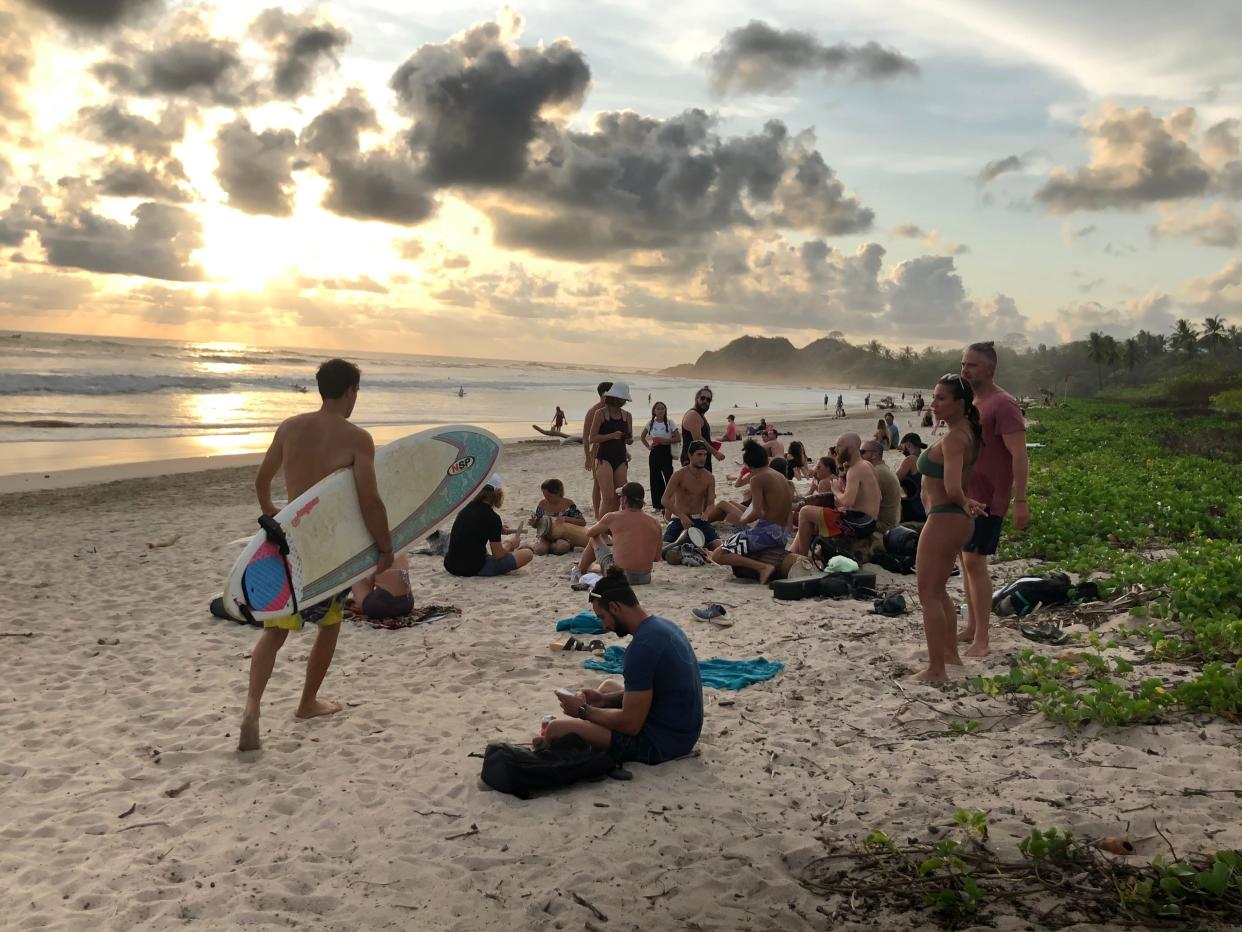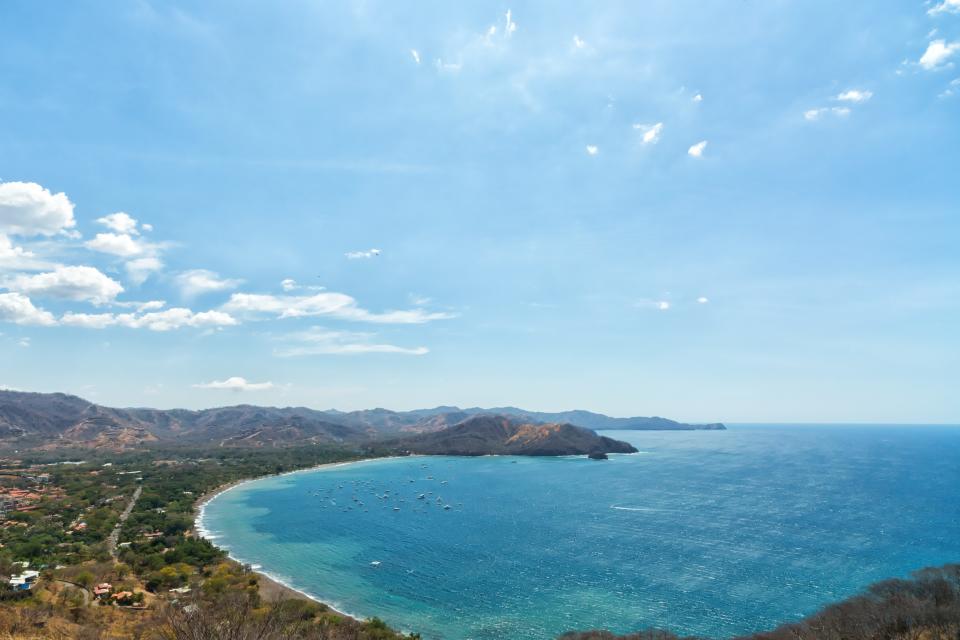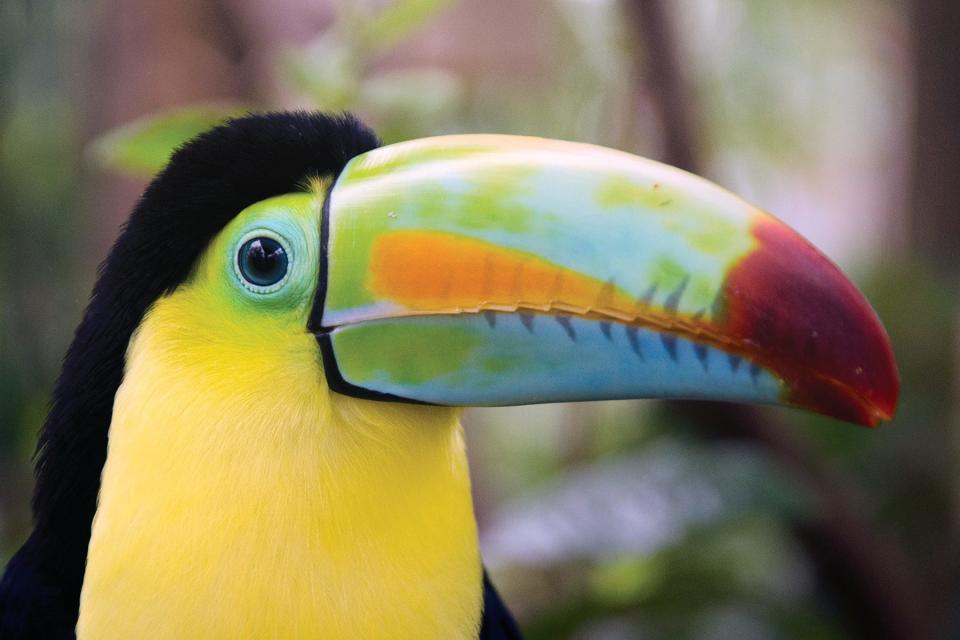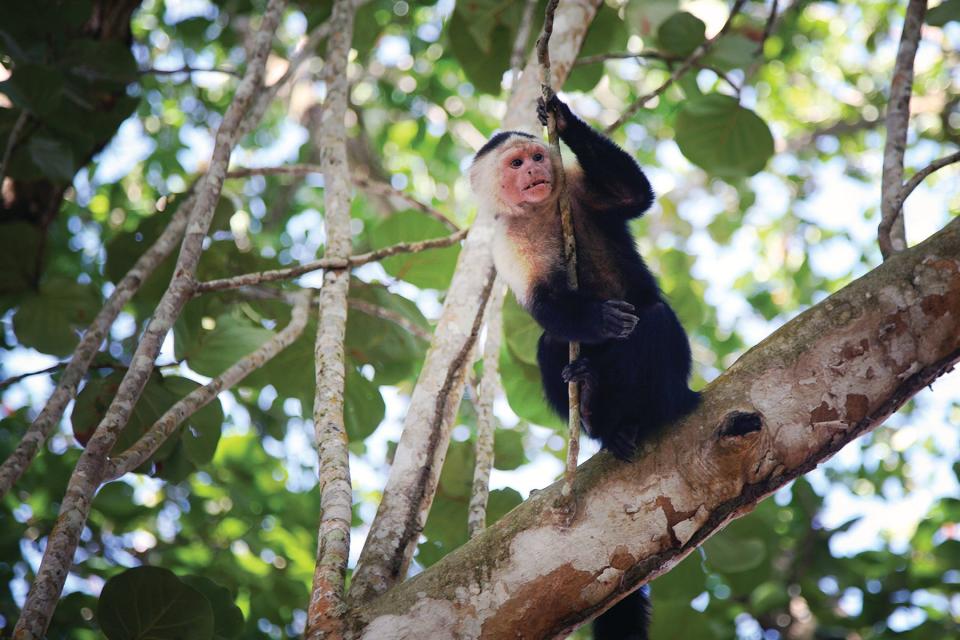What's it like to travel to Costa Rica right now? Blissfully quiet in some parts

NOSARA, Costa Rica – After climbing for hours through pocked and muddy coastal hills in a tropical downpour, we skidded our four-wheel-drive Suzuki Jimny to a stop just before the road dipped into a deep, rain-swollen stream.
We were stuck, kicking ourselves for using backroads when a Costa Rican man on a motorcycle pulled alongside. He waved for us to follow him into the water. We looked at each other, took a breath and plunged ahead.
“Just keep going,” my travel partner said, before we finally emerged on the other side, tires wet and muddy, hearts pounding, waving thanks to our friend.
By late afternoon we were descending into the lush, palm-studded Playa Guiones in Nosara, a surfing hamlet on Costa Rica’s Nicoya Peninsula, where American accents dotted the beach as the clouds broke for one of the Pacific coast’s famous pink and amber sunsets.
International travel planning difficult with shifting COVID-19 protocols
But it wasn’t the notoriously rough backroads that worried us most when – finally fully vaccinated – we pondered our first foray back to international travel after a pandemic year of shutdowns.
We spent hours scouring the web to understand often-shifting entry requirements for various countries, debating our safety and that of others in countries we visited, as well as the logistics and uncertainty of navigating COVID-19 testing or insurance requirements.
Costa Rica seemed like a place where we could safely spend most of our time outdoors at beaches, cloud forests, national parks and open-air restaurants. Opened to Americans in November, it seemed to have health care infrastructure to meet return-testing requirements.
Halfway into our trip, the Centers for Disease Control and Prevention raised its travel warning for Costa Rica, citing a "very high level" of infections, a circumstance shared by more than three-quarters of other nations. Costa Rica has had more than 275,000 COVID-19 cases, according to Johns Hopkins University. The U.S. has had more than 32 million cases.
Costa Rica travel requirements
By then we’d arrived with little hassle. No tests are needed to enter. But 48 hours before our flight, we had to fill out Costa Rica’s online Health Pass and purchase or prove COVID-19 travel insurance coverage of up to $2,000 for hotel quarantining and $50,000 in medical expenses. While you can get documents to prove coverage from an existing insurer, we purchased it through links to registered agencies on the same website, at a cost of $11 a day.
The website gives a QR code we showed before boarding our United Airlines flight and to customs officials after landing in Liberia, the capital of Guanacaste.

Currently, national parks may operate at 100% capacity, bars and casinos can operate at 50% capacity, and beaches are open from 5 a.m. to 6 p.m., according to the U.S. Embassy in Costa Rica.
That didn’t impact our activities around Nosara, which draws surfers, expats, yoga buffs and families who dotted the small town’s cafes and restaurants, filled the Gilded Iguana hotel, took yoga classes and enjoyed the golden-sand stretch of Pacific beach framed by bluffs.
Signs requiring masks were posted at many businesses, with most people complying. We spent days renting surfboards and eating outdoors at restaurants such as La Luna, located on nearby Playa Pelada, which retains its fishing village charm.
We stayed at the Living Hotel, where single-story rooms are set in a lush jungle where we could hear a howler monkey, and devoured breakfasts of local coffee with homemade coconut milk and plates of eggs, avocado, mango and rice and beans called gallo pinto in open-air Destiny Cafe.
Things began picking up after the county opened to all U.S. states in November, said manager Alejandro Gomez. Even after the shoulder season that began in April, digital nomads and friends of expat Americans had kept it slightly fuller during the still quiet time.
“If you look at some other areas, they are not working as we are here,” he said. “It’s not crowded, but it’s enough.”
That’s not true across Costa Rica, where the number of tourists visiting in the first three months of 2021 was down 76% from 2020, according to the Costa Rica tourism board. Just 135,308 came from the U.S. at that time, compared to 405,000 in 2019.
Traveling in Costa Rica

We traveled next to the remote but increasingly popular beach town of Santa Teresa, where a dusty coastal road jammed with surfers on ATVs is lined with shops and restaurants. We stayed in a guest house up a dirt road so steep two Americans in rental cars slid off into a ditch during a rainy night, leading to a night-long effort by locals to pull them out.
Younger crowds meant less mask-wearing in some spots. That wasn’t an issue in the quieter Montezuma, a rugged and unspoiled coastal enclave with cafes and remote beach lodging a short drive away, where we hiked to a hidden tidal pool fed by a hillside waterfall.
After taking a car ferry from Playa Naranjo to the mainland, we drove up winding roads into the Cordillera de Tilarán mountains, past cows and ranches, into the famed cloud forests of Monteverde , where tropical winds condense in the cool air to create one of the most biodiverse areas on Earth. Founded by pacifist Quakers in the 1950s, it has turned into an ecotourism hot spot for its waterfalls, wildlife and bird-watching, and hiking.
While benches in the towns of Monteverde and Santa Elena no longer had police tape on them, and the famed Monteverde Cloud Forest Biological Preserve was reopened, crowds were slim, and some restaurants, hostels and hotels remained largely empty.
Yeisson Campos, who has run the Arco Iris Lodge for decades, said the pandemic has been economically devastating for many, and it's been slow to pick up.
But it felt blissfully quiet. One night, we sipped a local Imperial beer on the porch of a home at Arco Iris after a cloud forest hike, listening to monkeys and birds in the mountaintops.

Our last stop was a stay in La Fortuna, the gateway to the Arenal Volcano National Park. We found refuge from the touristy town at the Nayara Gardens, whose complex of pools, luxury cabins and restaurants are tucked in lush gardens. Our balcony included a whirlpool spa with private jungle and volcano views. In the evening, we took in the outdoor natural EcoTermales hot springs, a lush and romantic oasis that required reservations, masks when not in the pools and limited visitors.
Getting home: COVID-19 tests and final memories made
Nervous about getting our COVID test results back in time for our return to the U.S. – all air passengers ages 2 and older flying into the U.S. must present a negative coronavirus test taken no more than three days before their flight or proof they recovered from the virus within the past three months – we booked rapid tests at the airport the day before our early morning departure, just in case.
We paid $65 each for rapid antigen tests at Daniel Oduber Quirós International Airport in Liberia with Laboratorios Echandi, which promised results within an hour. Outside the airport, we walked to a big white tent, registered and got our noses swabbed. If you’re positive, you have to quarantine at a local hotel, and most U.S. airlines require a 14-day quarantine.
We got the green light via email. We spent a blissful last night at El Mangroove, a Marriott hotel on the Gulf of Papagayo, just a 20-minute drive to the airport. We dined on mahi-mahi and swam in the dark-tiled pool, watching the sunset on a wedding on the beach and boat bobbing in the bay.
The next morning, we showed our results to airline check-in agents and were back in the U.S. safe and sound within hours – more aware than ever that the still-shifting path of COVID-19 abroad would make foreign travel complex for some time to come.
This article originally appeared on USA TODAY: Costa Rica travel: From COVID protocols to howler monkeys and surfing

 Yahoo Movies
Yahoo Movies 
